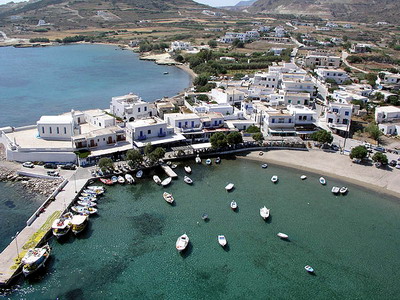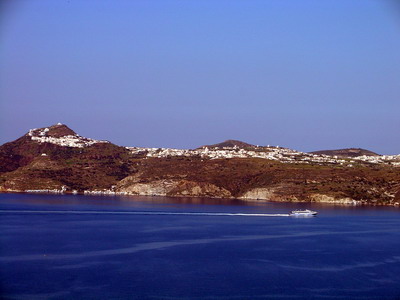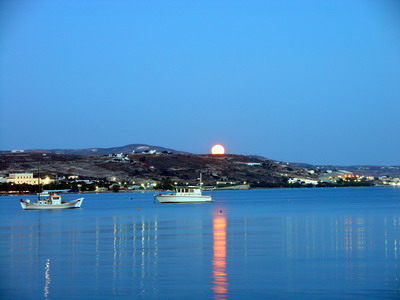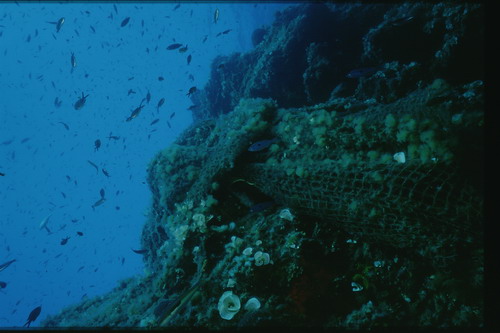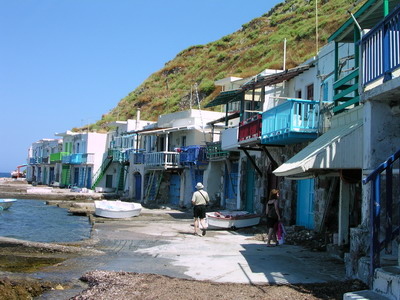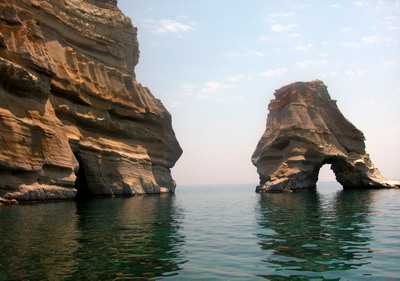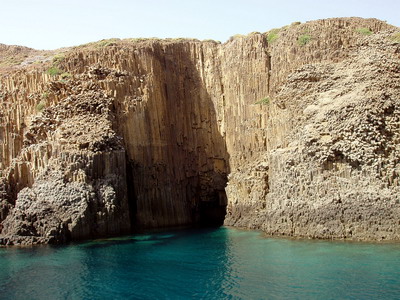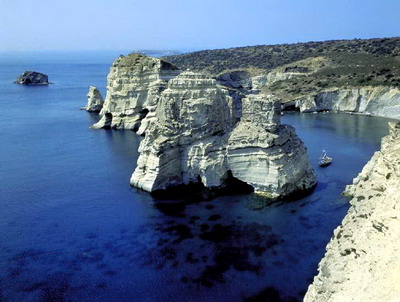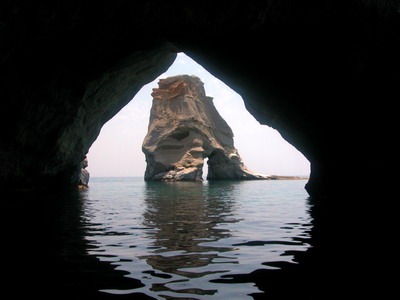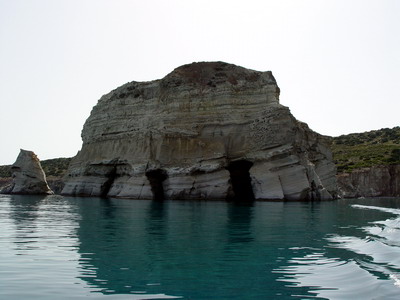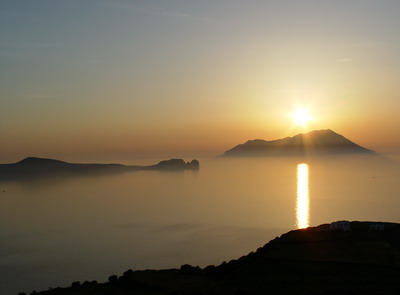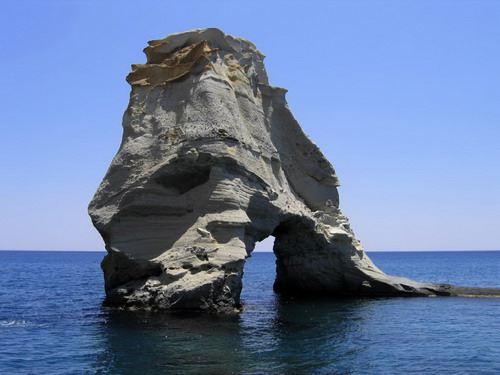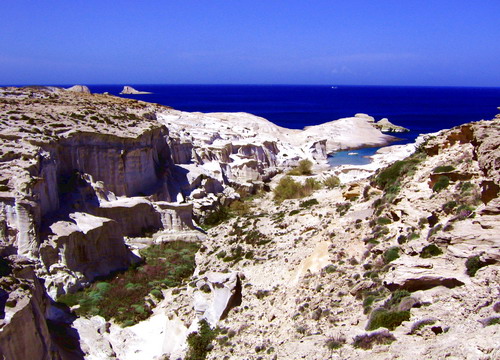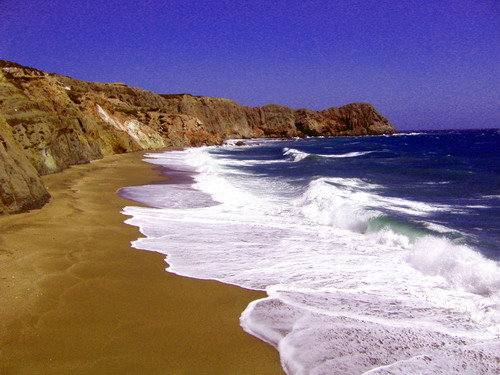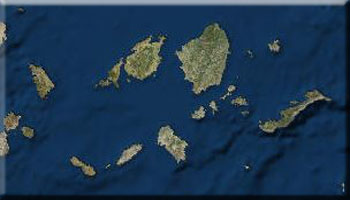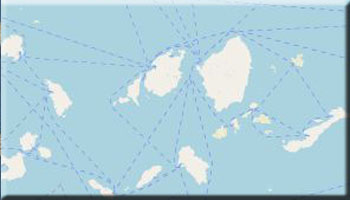Archaeological Museum: As we enter the main exhibition hall of the Archaeological Museum, the striking statue of the Venus de Milo meets our gaze. Unfortunately it is only a copy - although a very fine one - produced by the Louvre Museum workshop. Among the more important exhibits in the same room, is a 6th century B.C. funeral urn with a chariot race represented in relief pattern, a robed 3rd century B.C. statue, a lion decoration used as a table support and a female bust. A display case in the hall’s left section contains Neolithic relics, mostly obsidian tools, knives, arrows, and spearheads from Phylakope, Nyhia, and Demenagakis.
Other exhibits offer evidence of the artistic achievements of ancient Klima, including a masterful head with a burnished face and a section of a 3rd-century-B.C. tombstone depicting, in bas relief, a youth and his servant. Other finds from excavations around the island include stones inscribed with the 21-letter ancient alphabet of Milos. There are numerous finds from Phylakope, among them vessels with drawings of lilies and idols from Phylokope IV. Directly behind the Aphrodite statue, a display showcases coins, blades, and bronze figurines from the 5th and 4th centuries B.C., Roman-era glass and clay vessels, and reliefs and idols from the Hellenistic period.
Ecclesiastical Museum: Housed in the Church of Ayia Triada (Holy Trinity), just a short distance from the port, the Ecclesiastic Museum features 14th-century icons and fine samples of hagiography. The triple-apsed church, built after the Iconomachy (A.D. 824), is a museum piece itself.
Folklore Museum: Founded in 1967 by the Milos Society of Athens, under the guiding influence of Zafiris Vaos, the Folklore Museum features exhibits highlighting local folk culture. Exhibits include wax dolls dressed in traditional costumes, rare embroideries, and a recreation of a traditional household, including loom, kitchen, sleeping quarters, and pantry.
Milos Mining Museum: Opened in 1998, the Mining Museum is spread over three floors. Entering the ground floor, visitors come across a model depicting the volcanic eruption that shaped the island and a large geological map of Milos. Illuminated panels highlight mining activities to date, with images of tools and mining equipment used since mining began.
First floor exhibits include rocks and minerals from the island and around Greece, most importantly important minerals found on the island today. There are also fossils, and samples of obsidian, bauxite, alumina, and aluminum, photographic documents from the now defunct manganese and sulphur mines and the millstone quarries.
Among noteworthy exhibits are a Roman-era grindstone and a cedar trunk uncovered 28 meters below the surface at the bentonite quarry at Aggeria that is believed to be 2,000 years old. The library in the basement is also used for hosting talks and other events.
Maritime Museum of Milos: Created thanks to the efforts of dr. Petros Armenis, who managed to gather and exhibit, with the help of locals, with much love and respect, a wide range of articles. The museum operates since the September of 2008.
The museum's exhibits are quite much and rare as well and extend from the prehistoric times, reaching the early ages of the island's history.
The visitor will also have the chance to witness rare maritime maps, created by special craftsmen of the times, while the famous wooden boat "Irene" holds an outstanding position among the exhibits. The museum is located at Adamantas.
Catacombs : The Milos Catacombs are dug into a sheer slope near the village of Trypiti where the island’s early Christians gathered for worship and to bury their dead. The catacombs are unique in Greece and considered among the most important, along with those of Rome and the Holy Land.
Originally discovered by tomb robbers and relic hunters, the catacombs came to light in 1840, after they were looted. They comprise three chambers linked by five corridors and a funerary chamber, all arranged in a labyrinthine network that extends a total of 185 meters. The catacombs were once accessible along their length and breadth, but today just one chamber, the chamber of Elders, is accessible to the public. Though just 126 vaulted recesses with graves survive, it’s estimated that thousands of Christians were buried in the catacombs.
The graves of prominent citizens are marked with Christian symbols and inscriptions, such as the “Presvytera” (elder or vicar) inscription after which the chamber was named. Worth noting is a sarcophagus carved into the rock that is believed to be the burial of one of the early Christian martyrs. The tomb was subsequently used as an altar. The catacombs were used for worship and burials before Christian worship was allowed by the Decree of Medolianos and were abandoned around the fifth or sixth century when the ancient city of Klima was razed by an earthquake.
Sulphur Mines: Remains of the old sulphur mines are visible on the island’s eastern coast at the Paliorema cove. The mines were active until 1956 and are considered a prime sight in the island’s geological history.
Milos Conference Center - Giorgos Iliopoulos: Located on a four-acre estate at Adamantas. The center is open year - round and has a capacity of 320 delegates. It’s one of the largest such facilities in Greece and offers separate press room, internet room, infirmary, and 100 parking spaces. The conference center is fully air conditioned, has access for the physically disabled and an independent fire-protection system.









